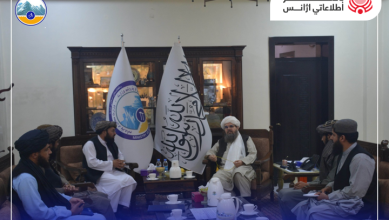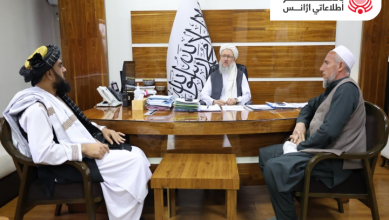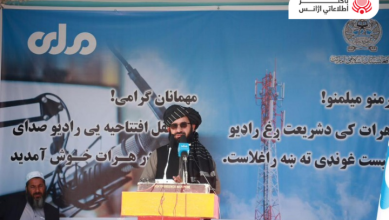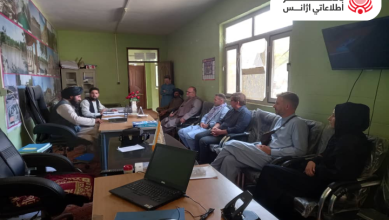
Sunday, December 18, 2011
Kabul (BNA) Dr. Sayed Makhdoom Raheen Minister of Information and Culture of Afghanistan in invitation of Japan Center for International Cooperation in Conservation a department of the national Research institute for Cultural Properties, Tokyo (NRICPT), participated in the 10th Expert Working Group Meeting for the preservation and the Safeguarding of the Cultural Landscape and Archaeological Remains of the Bamiayan Valley World Heritage property, Afghanistan and the symposium held ( 6 to 8 December 2011) in Tokyo , Japan.
The aim of the meeting was to advise UNESCO and Afghanistan authorities on issues related to the conservation of the Bamiyan World heritage property by reviewing and assessing ongoing activities in Bamyian, as well as identifying need and opportunities for future initiatives.
The meeting also provided an opportunity for the coordination of international efforts.
Dr. Sayed Makhdoom Raheen Minister of Information and Culture also delivered speech in the meeting the following is the highlights of his speech.
Director of NRICP Tokyo, representative of the ministry of Foreign Affairs of Japan, from UNESCO, ICOMOS and ICCROM, ladies and gentlemen Expert Working Group for the Safeguarding of the Bamiyan World Heritage Property.
It is highly appropriated that this 20th Meeting had been hosted by our Japanese friends, who have been among the strongest international supporters of Cultural Heritage in the Bamiyan Valley since 2002 and also for heritages in general in Afghanistan.
With financial support from the Japanese government and the technical support of UNESCO for the World heritage site in Bamiyan, the Ministry of Information and Culture has been able to coordinate emergency efforts to safeguard the remains of this extraordinary Afghan heritage.
In 2003, the Cultural Landscape and Archaeological Remains of the Bamiyan Valley were inscribed on the world Heritage list. Together with the World Heritage site of jam, they are great sources of pride for the Afghan people.
Since then, substantial progress has been made in Bamiyan, we have seen considerable improvement of the state of preservation of the site of the Buddha Cliffs which encompasses the remains of the sculptures and Buddha niches and the vast monastery composed of thousands of rooms and caves cut into the cliff.
We have also seen substantial progress with the preservation of mural paintings and archaeological sites, the demining of the Bamiyan Valley and the World Heritage property, and the ongoing development of a management system to enable us to safeguard the site for future generations of Afghans and the World.
Of course, more work needs to be done on emergency measures to safeguard all the sites in Bamiyan to ensure the continued preservation of the site and in order to remove it from the list in danger.
More efforts also have to be made on demonstrating the values of heritage for development: people in Bamiyan need to see tangible results through heritage related employment, vocational training and the development of cultural infrastructure, such as museums and culture.
It is also appropriate at this 10th meeting that we reflect on what has been done, not just as an exercise in itself, but with a critical eye on what has been achieved and what has not been achieved. 10 years ago the Afghan people strongly supported the reconstruction of at least one of the Buddha sculptures destroyed by the Taliban in 2001.
This was to be a symbol for Afghanistan and the World that the new Afghanistan was ready to stand for peace, democracy and an open society against fanaticism.
As much as highly complicated and sophisticated work has been undertaken in Bamiyan in relation to the two Buddha niches by our friends from ICOMOS, it is difficult for the average, non specialized person, to see or understand what has been done, in the sense, our achievements 10 years after the destruction of the statues have not been able to have the symbolic impact on the people of Afghanistan, and the world that I just mentioned. And it still remains unclear to many whether it is even technically or financially possible.
Unfortunately, in this sense, we have failed.
Yet, despite the tragic event of the destruction in Bamiyan, it is clear that 10 years later, the international community, the Afghan government and the people of Bamiyan remains highly motivated to safeguard and rehabilitate cultural heritage in the valley and also optimistic concerning the ongoing success of cultural development in the province.
We still think this problem of making a symbolic statement to the world can still be addressed.
The ministry of Information and Culture has proposed another solution and perhaps more realistic solution to this issue of bringing together our hopes and aspirations and the technically and financially more practical way forward at this time.
We have proposed to establish the Bamiyan Museum for peace in the Bamiyan valley, the concept we have elaborated is for a multi-functional complex that will be.
1- A museum to safeguard movable cultural heritage of Bamiyan and surrounding areas
2- A centre for education on cultural and natural heritage, its documentation, management and conservation
3- A symbolic place of memory for the tragedies of the past and hopes for a better future
4- A centre for vocational training in the arts and crafts industries in Bamiyan
5- A centre for training staff of the MoIC and students from the Bamiyan University in heritage related fields and disciplines.
6- A cultural centre that can become an important focal point for the community for cultural events and festivals.
We are currently working with the UNHESCO Kabul office on the methods of implementation and on fund-raising for the Museum which we hope will come to symbolize our collective efforts for peace and social cohesion in Afghanistan.
Therefore, what we do from here on the safeguard the World Heritage site of Bamyan can also come to symbolize something else beyond simply the tragedy of the destruction which is now symbolized by the empty niches.
This new cultural centre we hope to build in Bamyan can symbolize hope for the further; it can symbolize reconciliation in Afghanistan, it can symbolize the promotion of intercultural dialogue as the foundation towards building a culture of peace in Afghanistan and sending this message to the world.
We hope to continue to work in partnership with all the friends of Afghanistan towards these goals.
This occasion is the appropriate time for all of us to renew our focus and our efforts for the safeguarding of cultural heritage in Afghanistan.
The heritage of Afghanistan is a heritage shared by us all and the preservation of this shared history can be a symbol of our collective aspirations for a better future.
My guidance to you in this meeting is that you consider how your activities can go beyond simply the conservation of heritage in Bamyan and more towards tangible cultural development impacts for the people of Bamyan, such as better opportunities for people to use their cultural knowledge as assets to improve conditions in Bamyan and Afghanistan in general.
I thank you for your time and wish you the best of luck with your discussions and deliberations during the working sessions of this meeting.




